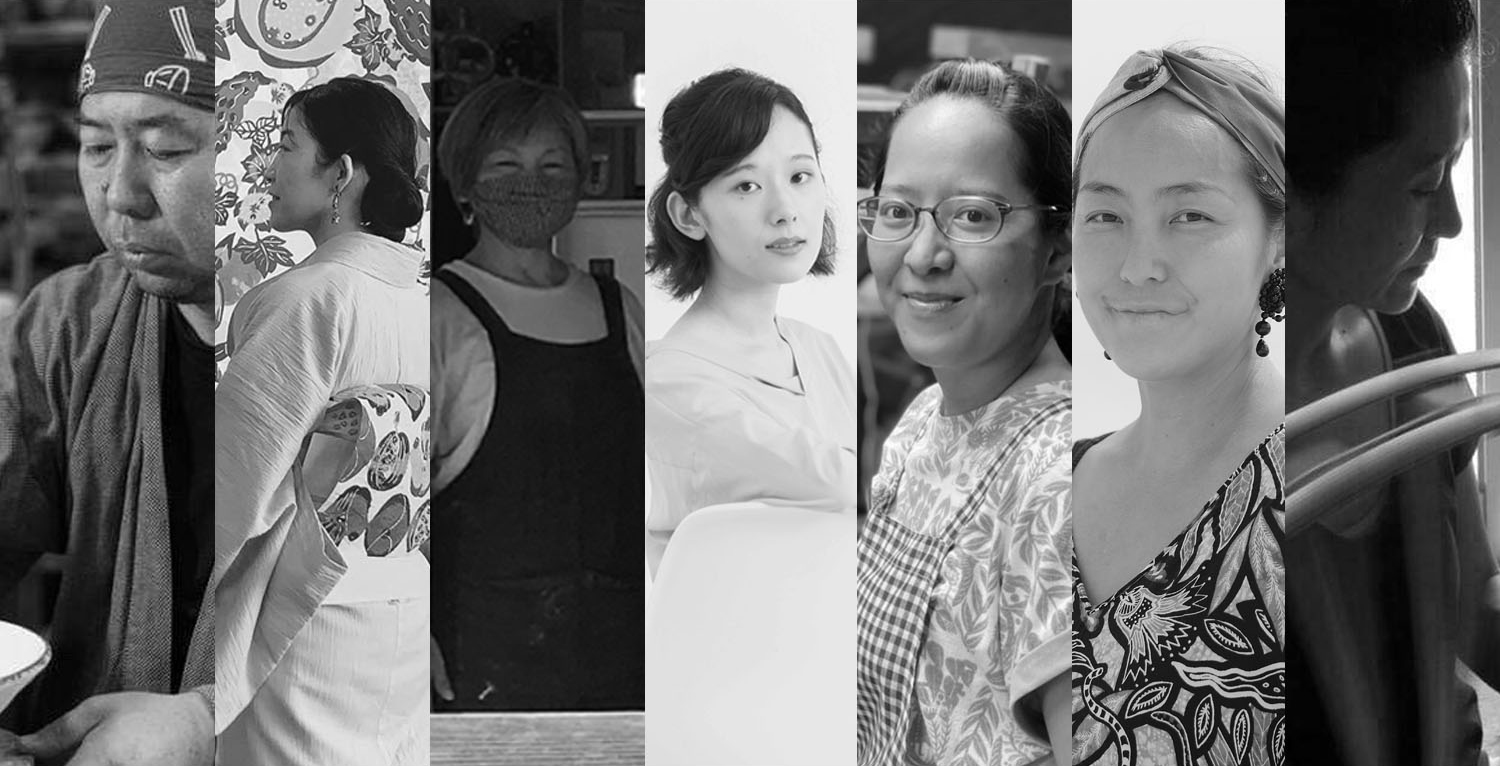Accha-Accha means “to walk around” in Uchinaaguchi, the Okinawan language.
The interior of Okinawa Prince Hotel Oceanview Ginowan was designed based on the concept of the Ginowan breeze. In turn, we set “a playful stroll with the breeze” as the art theme, where the hotel becomes a delightful promenade and the art you encounter along the way evokes discoveries and surprises, creating a new Ryukyu-ism of traditional Okinawan craftsmanship.

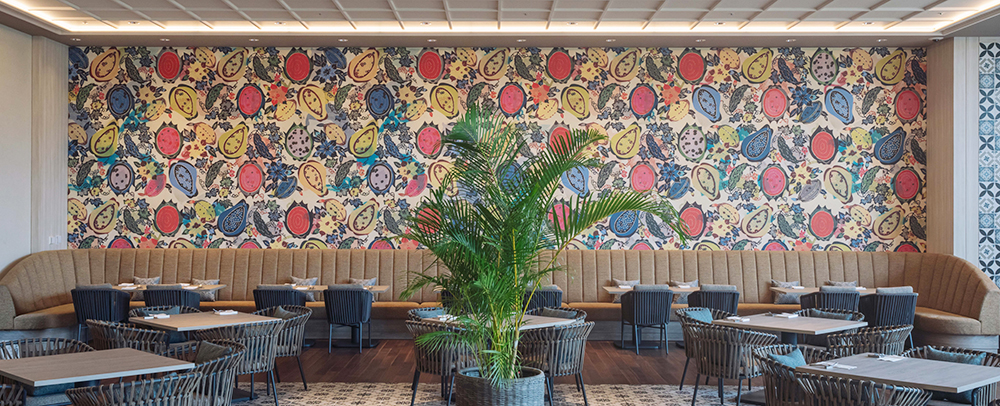
Art Direction for All Day Dining
We selected Bingata, one of Okinawa’s representative traditional crafts, for the large wall surface of the restaurant. It was a clear choice as this wall has a strong presence that overlooks a delightful space and receives a lot of natural light from outside.
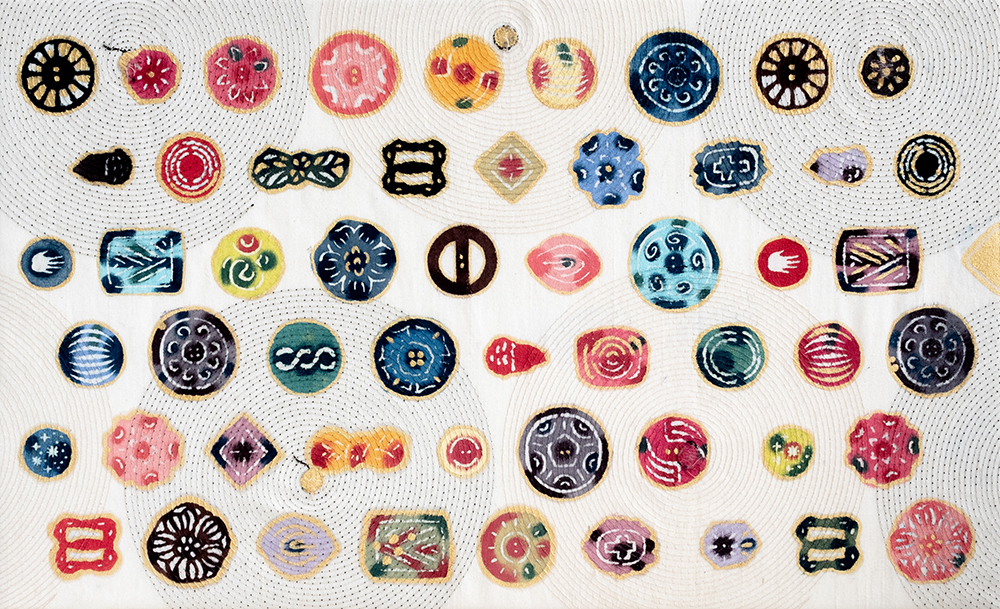
Art Direction
Bingata is a traditional dyeing technique unique to Okinawa, a craft with a long history that is said to have originated as early as the 13th century. Its distinguishing features are vivid colors, bold color schemes, and the simplicity of its shapes. It is to this day a craft that symbolizes Okinawa, as it played an essential role as a trade item for the Ryukyu Kingdom, a small kingdom surrounded by much larger countries. Today, many Bingata artists are active mainly in Okinawa, pursuing new expressions through traditional techniques.
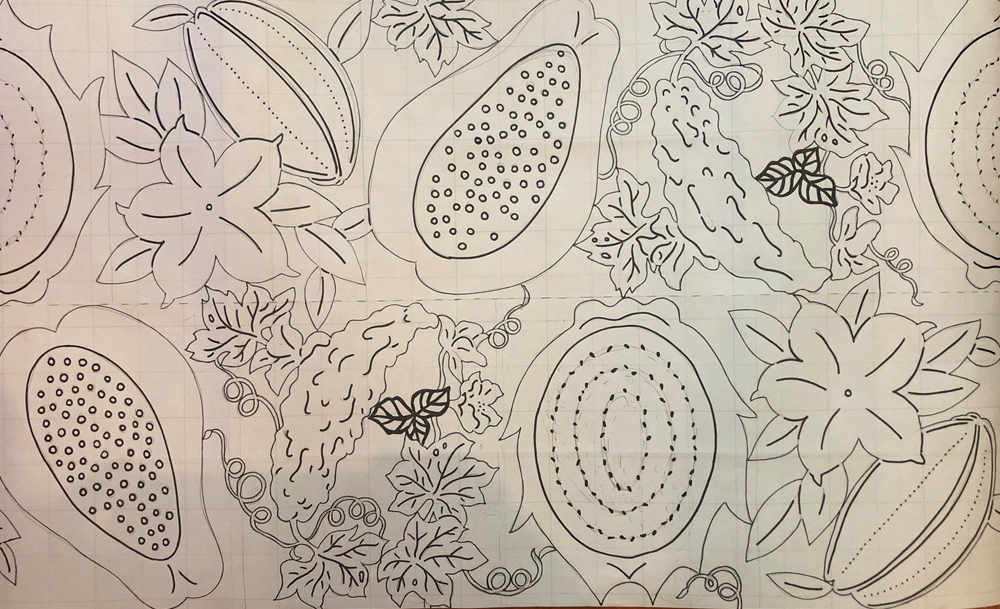
Design Development
In the restaurant, the Bingata art creates a scene of enjoying food and the bounty of Okinawan soil that is appetizing to the eyes. The colors and shapes of vegetables and fruits grown by Harusaa (farmers), who support the longevity of this island, are designed into this Bingata art.
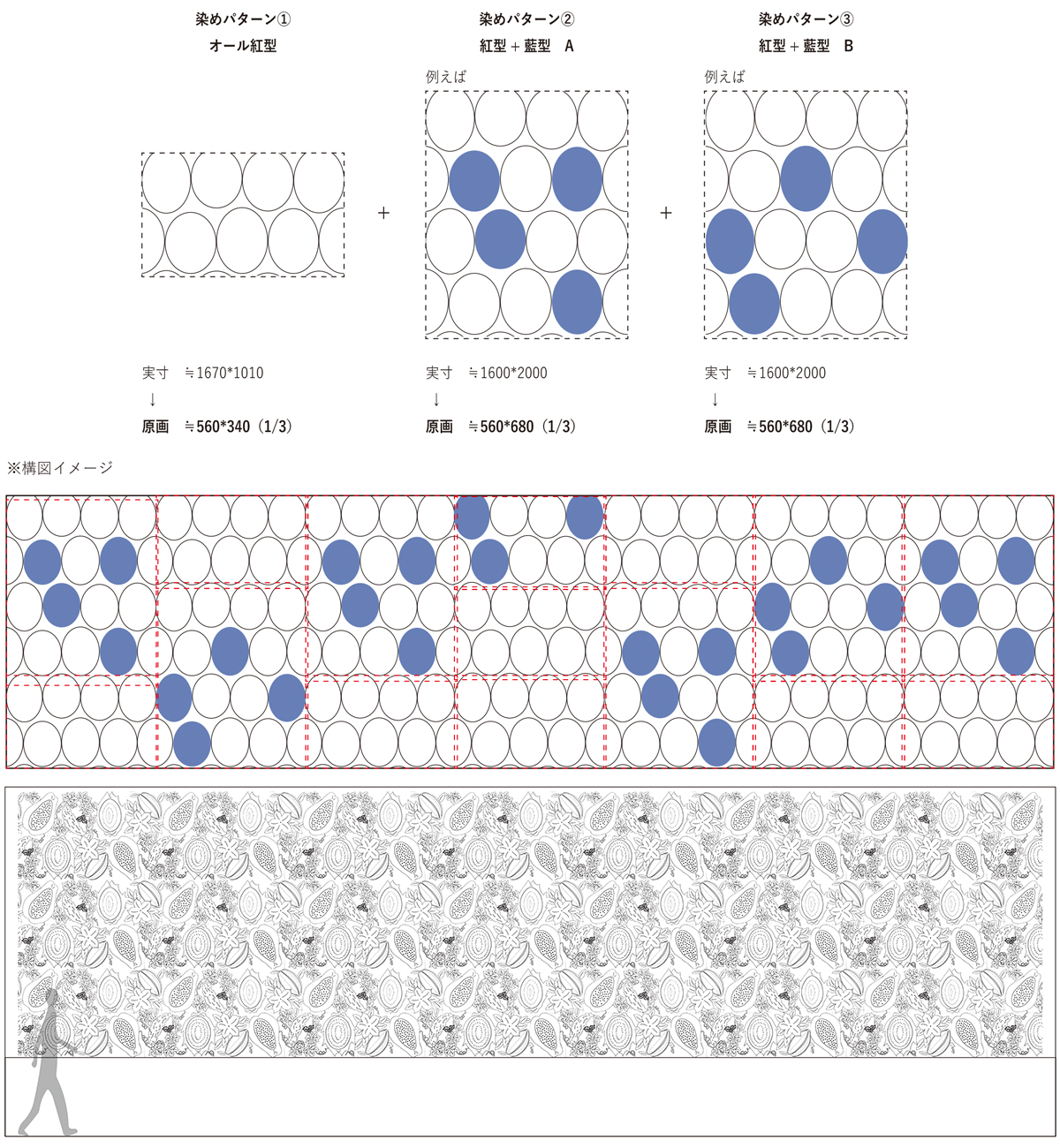
Design Fabrication-1
We carefully studied the overall composition and balance by laying out the basic design on the actual 12-meter mural size. One of the attention was to avoid a wallpaper-like repetition. As a solution, we incorporated the “Aigata” dyeing technique that uses Ryukyu indigo, adding beautiful shades of blue in contrast to the brightly colored Bingata.
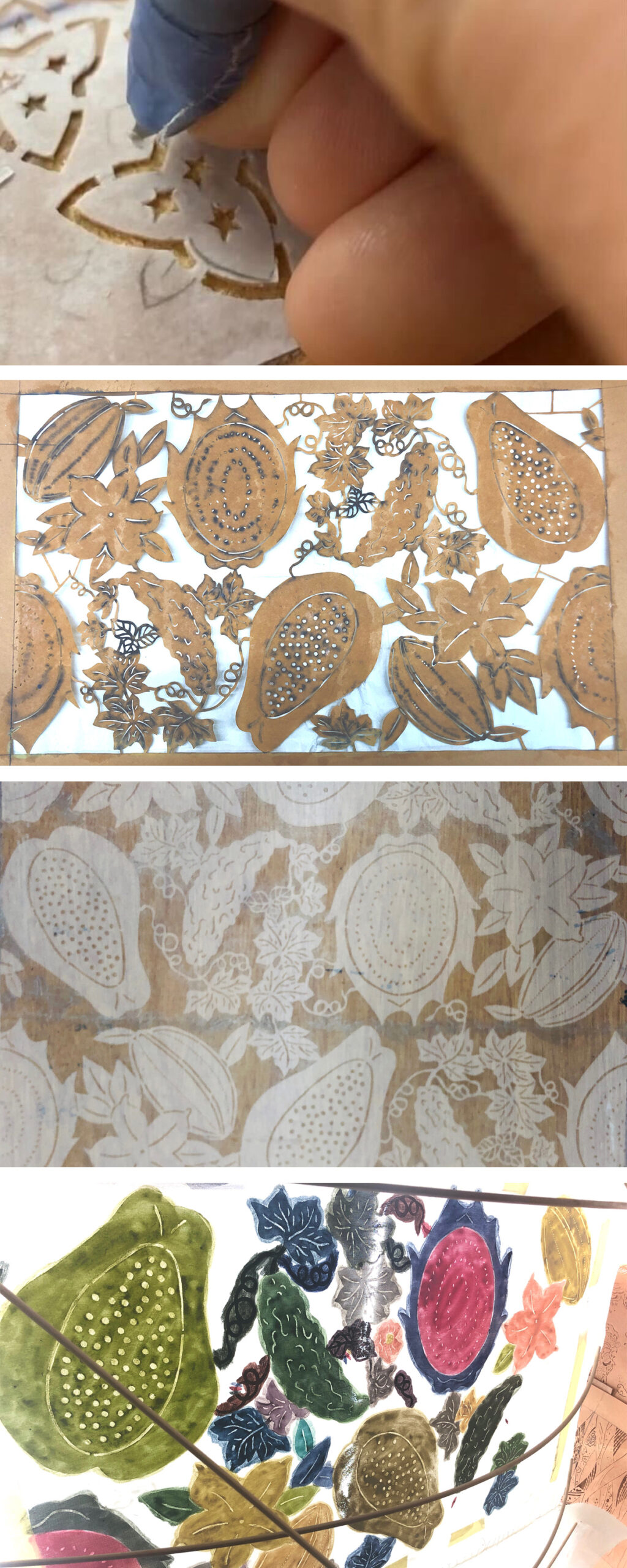
Design Fabrication-2
Here begins the Bingata production process. Several of the methods are: “katafui” (stencil cutting), “katachiki” (stencil placing), “irujiyashi” (coloring), and kumadoui (shading).
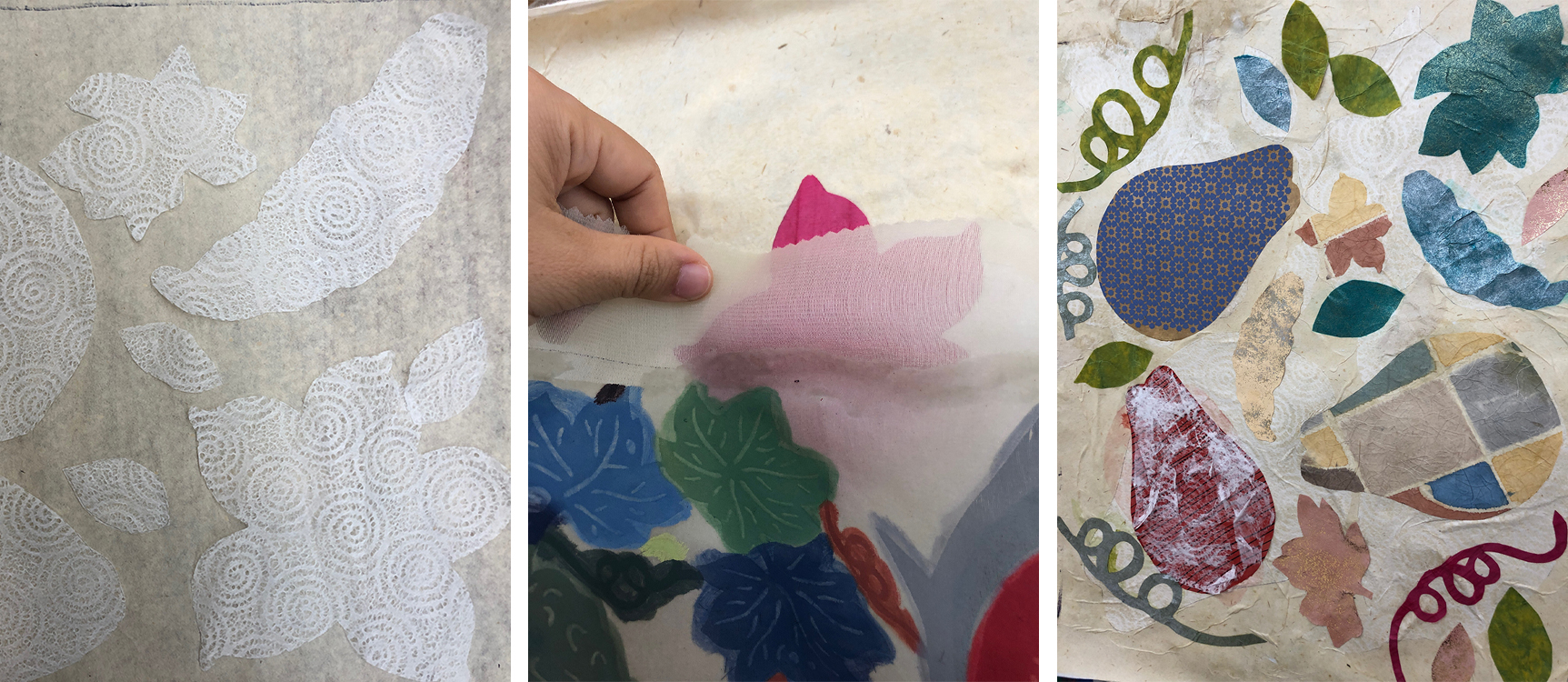
Developing Innovative Fabrication Strategy
After going through the basic Bingata production process, the artist adopted her unique method of layering cut-out motifs under the dyed organdy. This brilliant idea creates a sense of depth in the artwork.
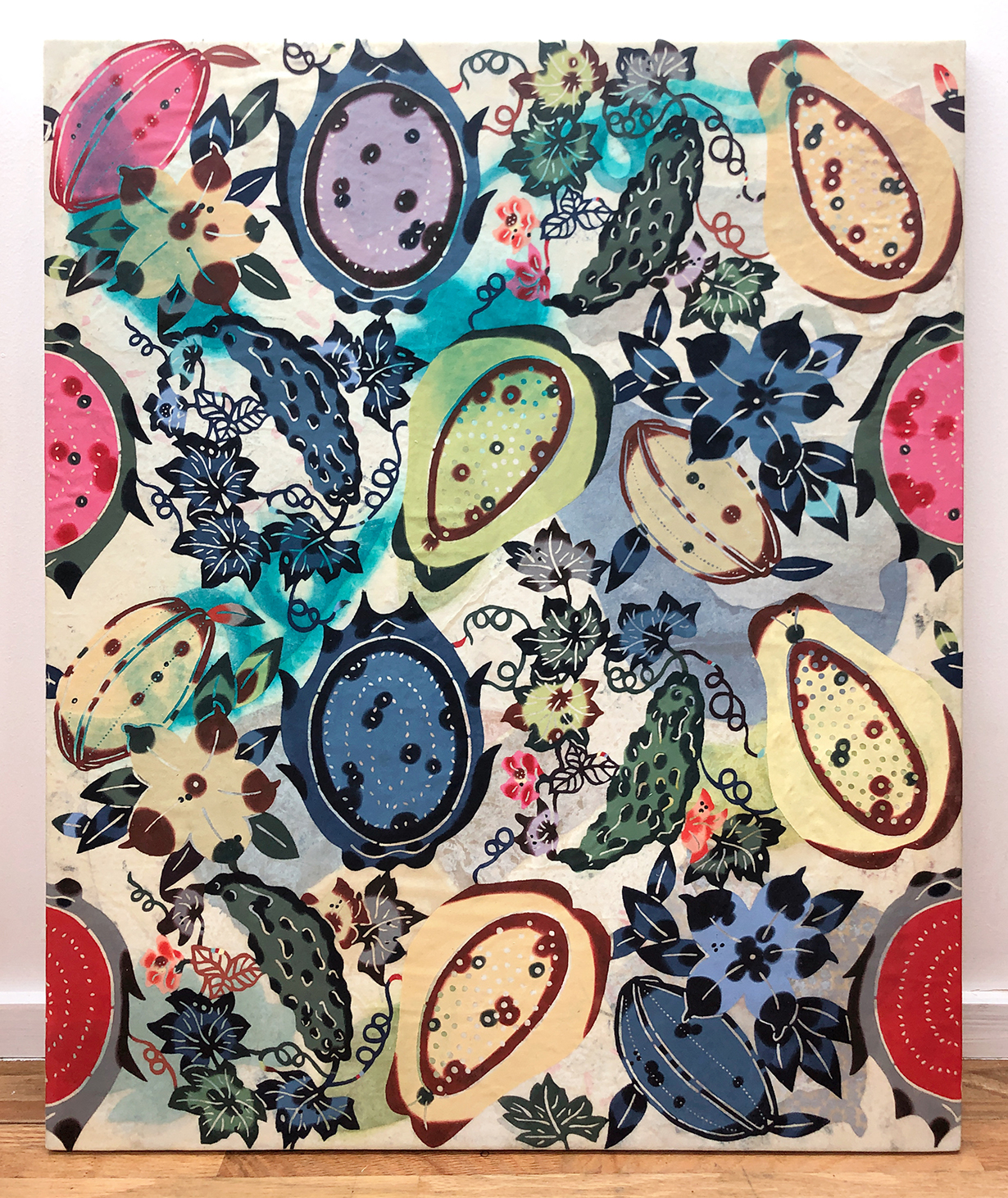
Final Destination
A mural as large as 12 meters tends to give a flat impression. By integrating different approaches such as indigo dyeing and layering cut-out motifs, we were able to create a sense of depth and movement that resulted in this original Bingata artwork unique to the hotel. After final adjustments, the design was printed onto wall coverings and installed.
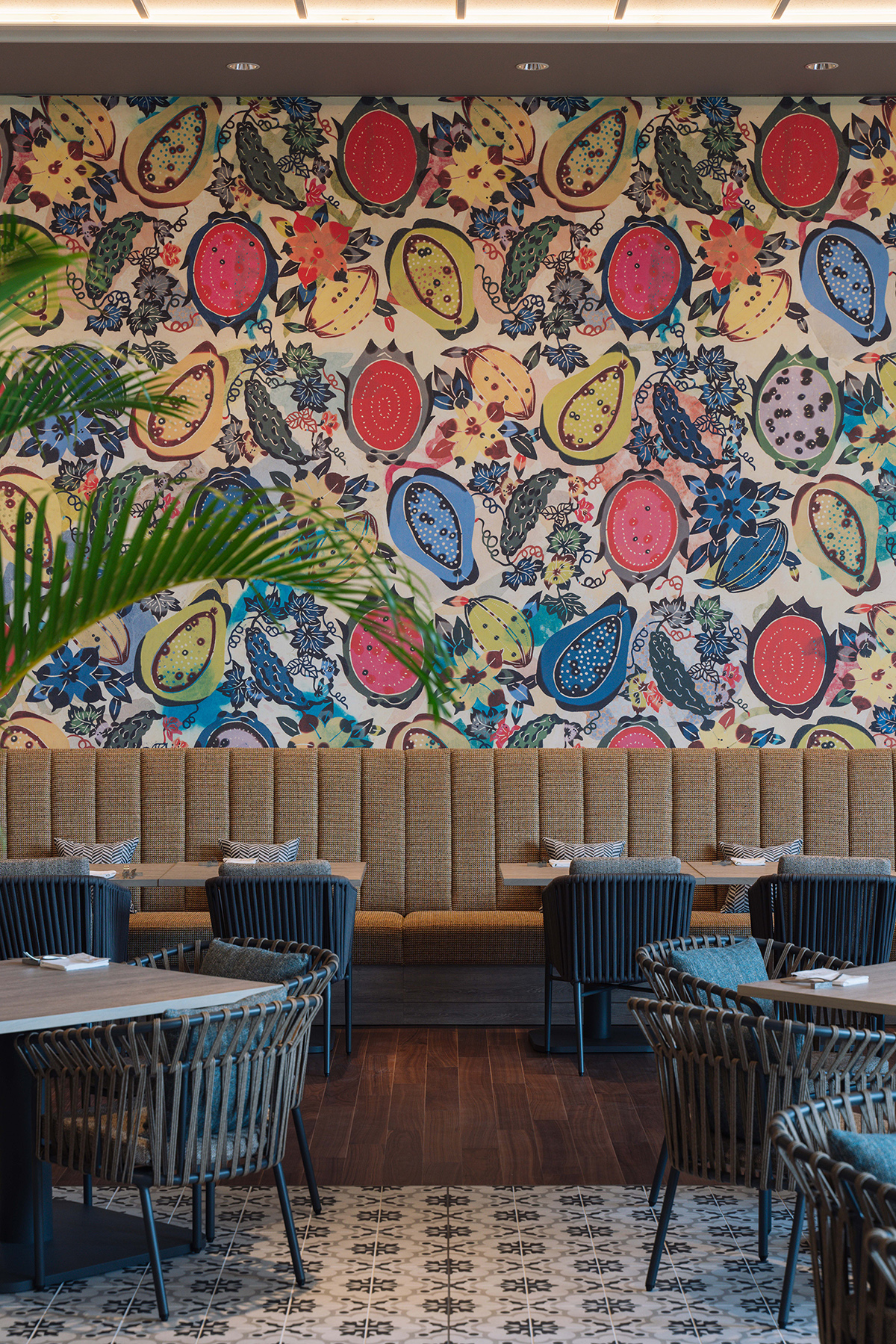
Converting the artist’s work into data, changing methods and scales, and overseeing the outcome comes with responsibility. It was essential for us to share the vision with the artist, and we had many conversations about how it should look in the end and the steps to take to maintain the artist’s original style.
Before the opening, when cardboard boxes were still flying around, we asked the artist to take a look at the finished wall. Seeing the artist’s expression of surprise and amusement at the difference in scale from her original artwork was pure delight. These are the moments where we realize how interesting it is to pursue a form of art that transcends boundaries and is the best match for the space.
